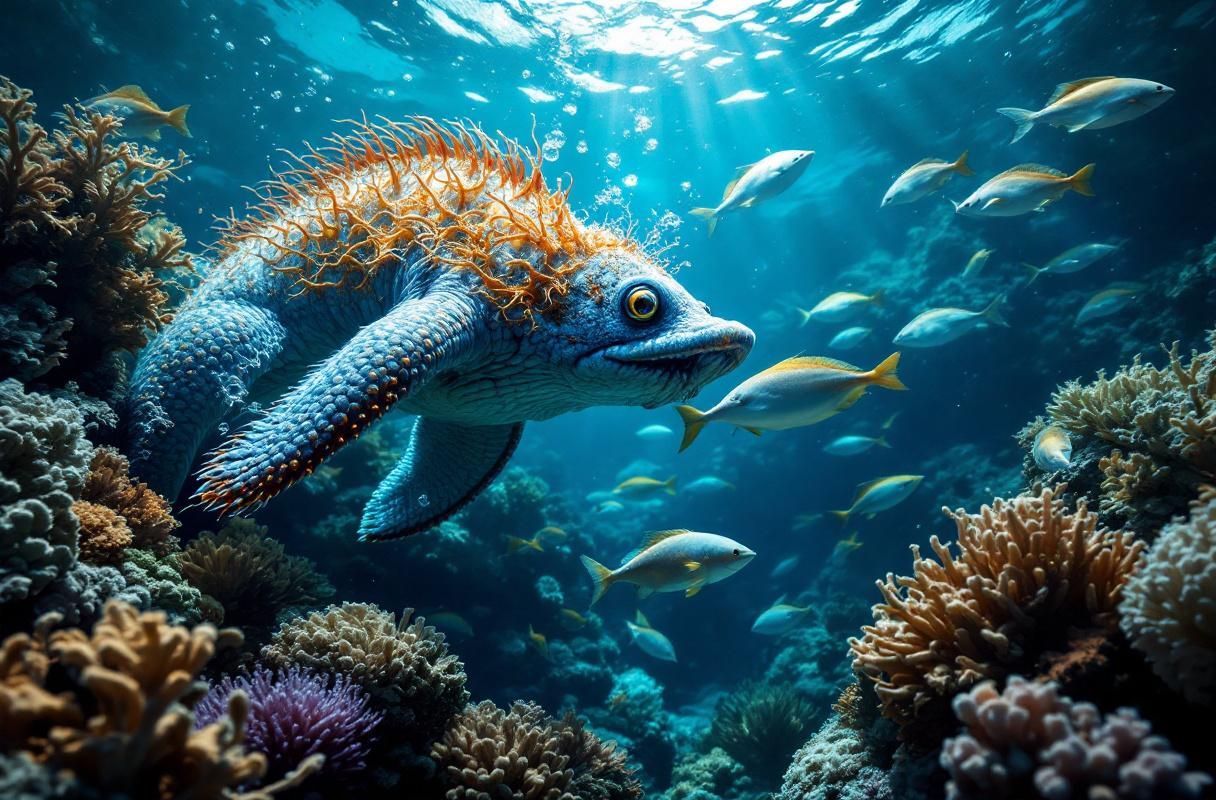
Did you know that over eighty percent of the ocean is unexplored and uncharted? This vast expanse, often referred to as the final frontier on Earth, holds secrets and wonders that continue to baffle scientists and ocean enthusiasts alike. In this article, we will delve into the mysterious world of deep ocean creatures, uncovering seven fascinating species that you may not have heard of. Additionally, we will explore the importance of deep ocean research and conservation efforts in light of climate change.
Deep ocean ecosystems play a crucial role in regulating the Earth's climate. These underwater habitats act as significant carbon sinks, absorbing vast amounts of carbon dioxide from the atmosphere. By sequestering carbon, deep ocean environments help mitigate the impacts of climate change. Understanding these ecosystems is essential, as they are also highly sensitive to changes in temperature, acidity, and pollution.

Exploration of the deep ocean is vital for understanding the impacts of climate change on these ecosystems. Research in this area helps scientists track changes in marine biodiversity, identify shifts in species distributions, and evaluate the health of underwater ecosystems. As ocean temperatures rise and ice melts, the deep ocean's role in climate regulation becomes increasingly important. By studying these habitats, we can develop strategies to protect them and mitigate further climate change effects.
The deep ocean is home to some of the most unusual and fascinating marine life on the planet. Here are seven unique deep ocean species that showcase incredible adaptations to their extreme environments.

The anglerfish is perhaps one of the most iconic deep sea creatures. Known for its bioluminescent lure, this fish attracts prey in the dark depths of the ocean. Its bizarre appearance, with an enormous mouth and sharp teeth, makes it a formidable predator in its habitat.
Once considered a myth, the giant squid is a real creature that resides in the deep ocean. With eyes the size of dinner plates, it uses its keen vision to hunt in the dark. Its long tentacles, equipped with powerful suckers, allow it to capture prey efficiently.
Deep-sea jellyfish are mesmerizing creatures that can produce light through bioluminescence. These jellyfish have adapted to life in the deep ocean by developing gelatinous bodies, which help them withstand extreme pressures.
The goblin shark is known for its distinctive appearance, featuring a long, flattened snout and protruding jaws. This shark uses its unique feeding strategy to catch prey, extending its jaw to snatch fish and squid in the blink of an eye.
The dumbo octopus is a small, deep-sea creature recognized for its ear-like fins that resemble the Disney character Dumbo. This octopus has adapted to its dark environment by developing a soft, gelatinous body that allows it to glide gracefully through the water.
Sea cucumbers play a vital role in deep ocean ecosystems as scavengers. They consume organic matter on the ocean floor and recycle nutrients back into the ecosystem, contributing to the overall health of marine life.
Despite its intimidating name, the vampire squid is a fascinating creature that feeds on organic debris in the deep ocean. Its unique adaptations include bioluminescent displays and a cloak-like webbing that helps it evade predators.
Advancements in submarine technology are enhancing our ability to explore the deep ocean. These innovations allow researchers to access previously unreachable depths and gather valuable data about marine life and ecosystems. With the development of remotely operated vehicles (ROVs) and autonomous underwater vehicles (AUVs), ocean exploration has entered a new era.

Remote sensing technology plays a crucial role in deep ocean research. By using sonar and other imaging techniques, scientists can map the ocean floor and identify underwater habitats. This technology enables researchers to study deep-sea ecosystems without disturbing them, leading to more accurate assessments of marine biodiversity.
Deep sea fishing has significant implications for marine biodiversity. As demand for seafood increases, fishing practices have expanded into deeper waters, threatening unique species that inhabit these ecosystems. Overfishing and destructive fishing methods can lead to the decline of populations and disrupt delicate underwater ecosystems.
Sustainable fishing practices are essential for the conservation of deep ocean species. Implementing measures such as catch limits, protected areas, and responsible fishing techniques can help preserve marine biodiversity while still meeting the demand for seafood. Engaging with local communities and stakeholders is crucial in promoting sustainable practices that protect the deep ocean's unique inhabitants.
Deep ocean currents play a vital role in nutrient distribution and the global climate system. These currents, driven by differences in water temperature and salinity, help regulate the Earth’s climate by transporting heat and nutrients across vast distances. Understanding these currents is essential for predicting climate patterns and their impacts on marine ecosystems.
Deep ocean currents also influence global weather systems. For example, the thermohaline circulation, often referred to as the ocean conveyor belt, connects the Atlantic and Pacific Oceans, affecting weather patterns worldwide. Changes in these currents can have significant consequences for marine life, including shifts in species distributions and alterations in breeding and feeding patterns.
The deep ocean is a treasure trove of biodiversity and plays a crucial role in our planet's health. As we uncover the mysteries of deep ocean creatures and the ecosystems they inhabit, it becomes increasingly clear that protecting these environments is essential for our future. The importance of deep ocean exploration cannot be overstated, especially in the context of climate change and marine conservation.
Support ocean conservation initiatives and stay informed about marine research. By advocating for sustainable practices and engaging with local communities, we can help protect the deep ocean's unique biodiversity for generations to come. Explore ways to get involved, whether through supporting organizations dedicated to marine conservation or participating in local ocean research efforts. The ocean's health depends on our collective actions.
Get free resources, early access to new features and updates.
No spam. Just fun educational emails!